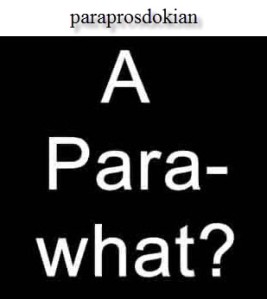 This is the time of year, when for a a few short days, sometimes weeks, “time,” philosophically speaking, assumes its rightful place in peoples’ lives. In a Dickensian sort of way, we are aware of present, past and future, if only briefly. As the calendar runs up to January 1st, many will reconnoiter and with uncustomary resoluteness, propose a change or action that should occur in the year ahead to improve the quality of their lot.
This is the time of year, when for a a few short days, sometimes weeks, “time,” philosophically speaking, assumes its rightful place in peoples’ lives. In a Dickensian sort of way, we are aware of present, past and future, if only briefly. As the calendar runs up to January 1st, many will reconnoiter and with uncustomary resoluteness, propose a change or action that should occur in the year ahead to improve the quality of their lot.
As we get older and with the passage of time, the New Year Resolutions begin to overlap with Bucket Lists. There are nuanced differences between the two, even as they begin to merge. Whereas the New Year’s Resolution is supposed to connote positive change or direction and thusly generate action, the Bucket List involves recognition that the window for wishing and hoping is narrowing. The Bucket List generates action–in a “speak now or forever (no metaphor intended) hold your peace” sort of way.
 You will not be surprised to learn that America’s number one New Year’s resolution this year is to “lose weight.” I think for many of us, weight loss is a perennially welcome guest. But, for some, and I am among them, the time has arrived when it does not top either the Bucket or New Year’s Resolution list. As I write, I am reminded of a Erma Bombeck quote and book title, written when she looked back on her life and, referring to her own tug of war with weight, if given a mulligan-life option she might have elected for “Less cottage cheese and more ice cream.”
You will not be surprised to learn that America’s number one New Year’s resolution this year is to “lose weight.” I think for many of us, weight loss is a perennially welcome guest. But, for some, and I am among them, the time has arrived when it does not top either the Bucket or New Year’s Resolution list. As I write, I am reminded of a Erma Bombeck quote and book title, written when she looked back on her life and, referring to her own tug of war with weight, if given a mulligan-life option she might have elected for “Less cottage cheese and more ice cream.”
While verifying the sourcing of that quote, I came across a word I had never before encountered: paraprosdokian. Its has classical roots, but not classical origins and apparently it hasn’t yet appeared in the Oxford English Dictionary. No matter, I like it and what it stands for:
“A paraprosdokian is a figure of speech in which the latter part of a sentence or phrase is surprising or unexpected in a way that causes the reader or listener to re-frame or re-interpret the first part of the sentence. It is frequently used for humorous or dramatic effect. For this reason, it is extremely popular among comedians and satirists.”
Apparently Winston Churchill was adept at it: “You can always count on the Americans to do the right thing — after they have tried everything else.” Here are a few other examples:
- War does not determine who is right – only who is left.
- To steal ideas from one person is plagiarism. To steal from many is research.
- Why do Americans choose from just two people to run for president and 50 for Miss America?
- If the enemy is in range, so are you.
Google the term and you can read and enjoy dozens of examples of paraprosdokian phrases. But, beware, while they are delightful to read, they are harder to create than one might imagine. Inspired by the new addition to my vocabulary, on this eve of New Year’s eve, I am inclined to view life metaphorically through the paraprosdokian lens. To do this, you merely substitute the word “my life” for “sentence.” The definition, rewritten, looks like this:
“A paraprosdokian is an approach to life in which the latter part of one’s life is surprising or unexpected in a way that causes a person to re-frame or re-interpret the first part of one’s life.”
You’ve heard of 12 steps? This involves 3.
Step 1: The First Part
Everything until now falls neatly into the category of the expected–a life I’ve grown accustomed to living, a persona I’ve come to know well, a past I’m certain I recognize.
Step 2: The Surprise
Resolve to create for myself a context that makes room for the surprising and unexpected, so much so, that it…
Step 3: The re-frame
…causes me to take a second look at life up to today, seeing it in a new and different way–paving the way for the future to change the past without changing the past, just changing how it looks to me in retrospect.
I had a wonderful aunt who often said, “if you can’t change something, change the way you look at it.” A paraprosdokian approach to life does that for you. Making room for the unexpected and surprises in one’s life, will at the very least oblige you cast off the morsels of intractability that sometimes creep in as we mature.
And so, 2014’s New Year’s Resolution might look like this: Resolving to make room for being surprised with the unexpected in 2014 in a way that casts the past in a new light, provides continued purpose going forward and rewards me with the kind of unpredicted delight one feels when a good comedian leads you down the path that ends with a chuckle, or better yet, a belly laugh. Yes, more belly laughs in 2014.


 Admittedly I had some inspiration. Somewhere along the way I managed to collect an image of a two dimensional tree made of twigs. It apparently struck me as I saved it to my hard drive. Now I was facing a blank wall, only a two hours remaining before the first child arrived home, and a fireplace mantel, that while out of the ordinary beautiful, was not a substitute home for Christmas presents accustomed to sitting under a tree. We were in the car, and though I ruefully glanced at the empty tree lot, I proceeded on to CVS resolved to pick up two dozen clear “hooks” and convert an empty wall into a “tree.” A few minutes later, I was pulling into the driveway, threw the car into park, scrambled into the wooded area adjoining the driveway to gather a half dozen long boughs that had been cut from a downed tree the winter before.
Admittedly I had some inspiration. Somewhere along the way I managed to collect an image of a two dimensional tree made of twigs. It apparently struck me as I saved it to my hard drive. Now I was facing a blank wall, only a two hours remaining before the first child arrived home, and a fireplace mantel, that while out of the ordinary beautiful, was not a substitute home for Christmas presents accustomed to sitting under a tree. We were in the car, and though I ruefully glanced at the empty tree lot, I proceeded on to CVS resolved to pick up two dozen clear “hooks” and convert an empty wall into a “tree.” A few minutes later, I was pulling into the driveway, threw the car into park, scrambled into the wooded area adjoining the driveway to gather a half dozen long boughs that had been cut from a downed tree the winter before.